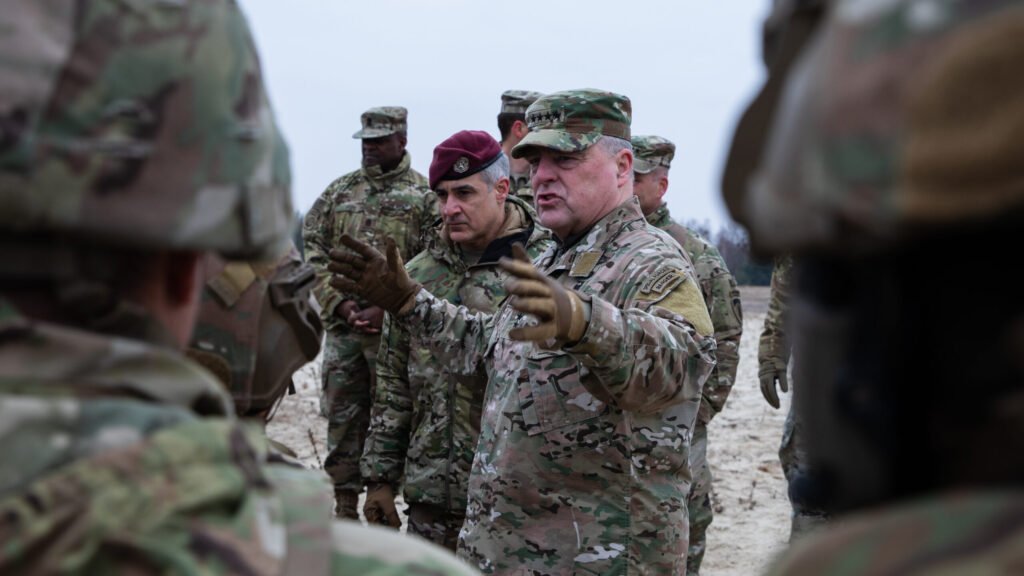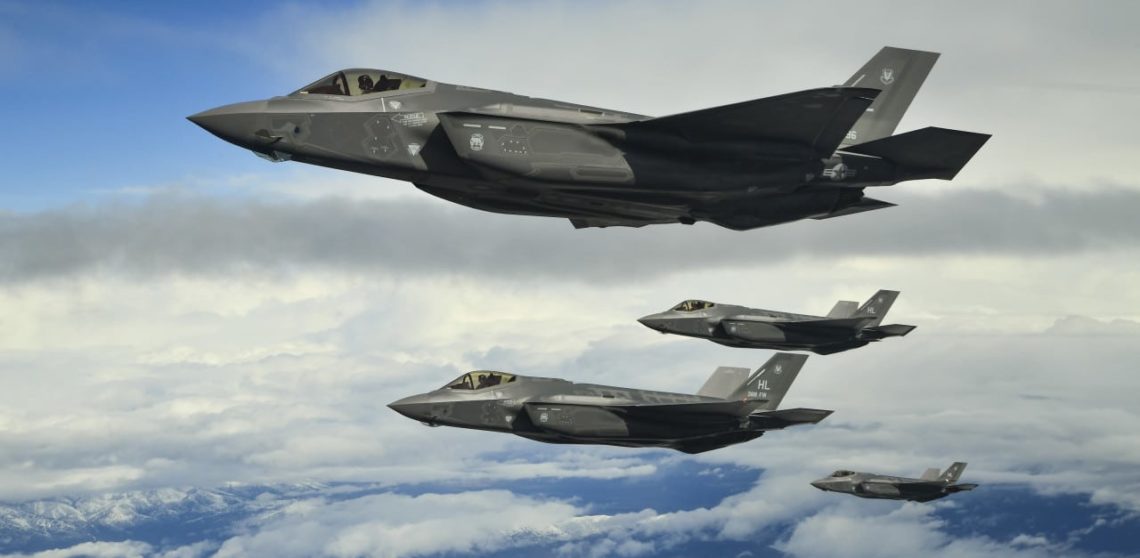•Russia’s invasion of Ukraine has forced a hard look at long-held theories about deterrence strategies in Europe. In the op-ed below, RAND researcher Michael W. Johnson explains he says why so many assumptions were wrong and what NATO can do now to update its strategic thinking — as well as its future security.
By Michael W. Johnson
The ongoing Russian war against Ukraine is a human tragedy on multiple levels. On a devastating personal level, many Ukrainian people have lost their lives, loved ones, homes, jobs, and freedoms because of it. On a geostrategic level, Western leaders by now should have lost many previous assumptions regarding foreign policy and defense strategies related to deterring Russia.
To its credit, NATO deployed a single battalion in each Baltic state as well as Poland as a signal of its commitment two years after Russia’s invasion of Crimea in 2014. Yet, if in February Russia had attacked west into the Baltics on short warning, instead of going south into Ukraine, then NATO would not have been ready to deny Russian objectives and prevent a rapid fait accompli.
If that had been the case, the American president and NATO leaders would have faced a terrible choice to either rely entirely on sanctions, escalate with tactical nuclear weapons or take months to deploy forces and logistics to launch a destructive counter-offensive — all in the face of threats of Russian nuclear escalation meant to discourage NATO’s resolve to follow through.
Defending NATO allies in order to deter aggression in the first place is more credible and much cheaper than bloody liberation. Yet NATO lacked the political consensus necessary in order to posture the forces sufficient to avoid a rapid defeat, as recommended in a RAND study I co-authored, Reinforcing Deterrence on NATO’s Eastern Flank, published in 2016. Why was NATO only able to agree to deploy four rotational battalions, essentially 25% of the force recommended by the study?
Given the realizations wrought by the recent invasion of Ukraine, the United States and its NATO allies might reconsider the following assumptions and arguments — raised by various sources in government and academia over the last seven years — that have limited conventional military deterrence in Europe:
1. “The US should not get involved in any more forever wars.” The assumption here is that the US and NATO should avoid direct military conflict with Russia in Ukraine due to the risk of nuclear escalation. Yet the false choice between extremes of wanton intervention and excessive restraint often ignores defensive deterrence as a rational alternative to prevent war and promote prosperity.
2. “A major war in Europe or Asia will not happen because of economic interdependence.” This assumption seems to be confirmation bias, namely believing that dictators would make similar calculations about costs and benefits as democratically elected leaders. Dictators have a surprising risk tolerance and may prioritize strategic gains above economic effects. Additionally, it’s worth noting that support for sanctions may weaken the longer Western citizens suffer because of the effects of these sanctions on shared finance, energy, and supply chains.
3. “Basing NATO ground forces in Poland and the Baltics is a provocative threat to Russia.” There is no political will or military capability in NATO to invade Russia, and Putin knows it. If NATO were to station three brigades to reinforce deterrence in the Baltics, then Russia would still defend at a 10:1 advantage, well above a doctrinal 1:3 ratio for a successful defense. Russian nuclear weapons still make the costs of invading the Russian motherland infinitely greater than any benefits. The excessive fear about provoking Russia with modest ground forces reflects either a diplomatic hope that Putin (who has increasingly behaved as a lying, murdering, war-starting dictator) will negotiate in good faith, or a smokescreen to conceal NATO members’ reluctance to resource readiness and move forces from local districts to Eastern Europe.
4. “Russia will never attack NATO because of Article V.” The NATO treaty’s Article V — an attack on one member is an attack on all — is most effective when backed up by joint forces trained and ready to defend on day one of a Russian attack, not thousands of miles and months away from the fight. Even if Russia were to be defeated in Ukraine, it would seem irresponsible to assume a resulting drift into another “end of history.” For as long as Russian leaders fear democratic values, define conflicting interests, reject the status quo and the current rules-based world order, and have the capability to wage war, it seems dangerous to assume a war will never happen and as a result leave the eastern flank exposed.

U.S. Army Gen. Mark Milley, the Chairman of the Joint Chiefs of Staff, and Senior Enlisted Advisor to the Chairman Ramon Colon-Lopez, speak with Paratroopers from the 82nd Airborne Division during a visit to Nowa Deba, Poland, March 4, 2022. (U.S. Army /Alexander Burnett)
5. “NATO can deter Russia with airpower; stationing ground forces in Eastern Europe is unnecessary.” The airpower “hammer” needs a ground “anvil” working together as a joint team. Otherwise, Russian forces could quickly seize objectives and “go to ground” in restricted terrain and cities, raising NATO concerns about civilian casualties. Ukraine has 44 million people and 200,000 soldiers who fought hard to defend and delay the Russian advance. The Baltic States have only 6.2 million people and 22,000 soldiers who could be overrun more easily. It is unrealistic to assume the Baltic states could defeat Russian aggression on the ground while NATO enjoys relative safety with stand-off attacks in the air.
6. “The US should cooperate with Russia in a ‘reverse Kissinger’ strategy against China.” This theory (i.e. counter-balancing) has been repeatedly contradicted by an ugly fact: the Russian graduates of the KGB School of Government do not agree. The price Putin has demanded in exchange for Russian cooperation is exorbitant: withdrawing NATO forces from Eastern Europe, leaving allies exposed to coercion or invasion. The benefits of Russian cooperation are suspect. Will Russia redeploy its Western forces to the Chinese border? Will Russia halt energy exports and impose sanctions? Will Russia attack China if it invades Taiwan? That doesn’t seem likely. Genuine Russian cooperation to contain China seems unlikely to happen until genuine Russian democracy allows for a reduction in tensions with the West, or when China presents a direct threat to Russia. Neither scenario seems realistic in the near or even distant future.
7. “The US should leave European security to the Europeans in order to focus defense strategy and spending on China.” As China becomes a superpower seeking to dominate Asia and exercise global influence, it is true Americans can no longer care more about European security than the Europeans. But at the very least, the US has vital interests at stake when the failure to deter Russian aggression against NATO allies risks nuclear escalation in Europe. Credible deterrence does not require anything close to Cold War force levels — just one allied corps instead of eight might suffice. The American forces already exist; were the decision made to do so, three armored brigades are just based on the wrong side of the Atlantic. The European forces also already largely exist; they are just not trained, equipped, and ready. If the US wants to achieve a “stable and predictable” security environment in Europe to focus on China, there are more effective and available options worth considering.
It is obvious that Russia has invalidated the 1997 NATO-Russia Founding Act with its large-scale invasion of Ukraine, and that it has fundamentally changed the security environment in Europe. NATO is now free to respond accordingly and base its forces in Eastern Europe. For its part, the US could consider basing the V Corps headquarters, the 1st Armored Division, and supporting enablers in Poland. NATO allies could consider growing the battalions in the Baltics to three full brigades.
NATO also would likely need prepositioned equipment stocks to deploy follow-on forces by air, and logistics to sustain joint operations, especially more anti-armor munitions. NATO could also decide to modernize its sensor-shooter systems so targeting data from stealth aircraft, unmanned systems, and special forces can be rapidly sent to Army precision rocket fires before mobile systems can “shoot and scoot.”
States often begin wars when they do not accept the status quo and are optimistic they can gain more (or lose less) by fighting than by negotiating. Authoritarian leaders, fearing freedom will lead to democratic change that will weaken or overthrow their regimes, have always sought to crush internal dissent and/or attempt to dominate a regional sphere of influence. These sources of conflict have not changed: their existence preceded the February 24 invasion of Ukraine by the Russian military.
When the consequences of miscalculation and escalation are so devastating—as we currently see unfolding in Ukraine—making sure we are ready to defend and thus deter a larger war that must never be fought is a critically important task worthy of our attention and a reexamination of our assumptions.
Michael W. Johnson is a retired US Army strategist and RAND researcher. He’s the co-author of the RAND study Reinforcing Deterrence on NATO’s Eastern Flank, published in 2016.
Credit | Breaking Defence

